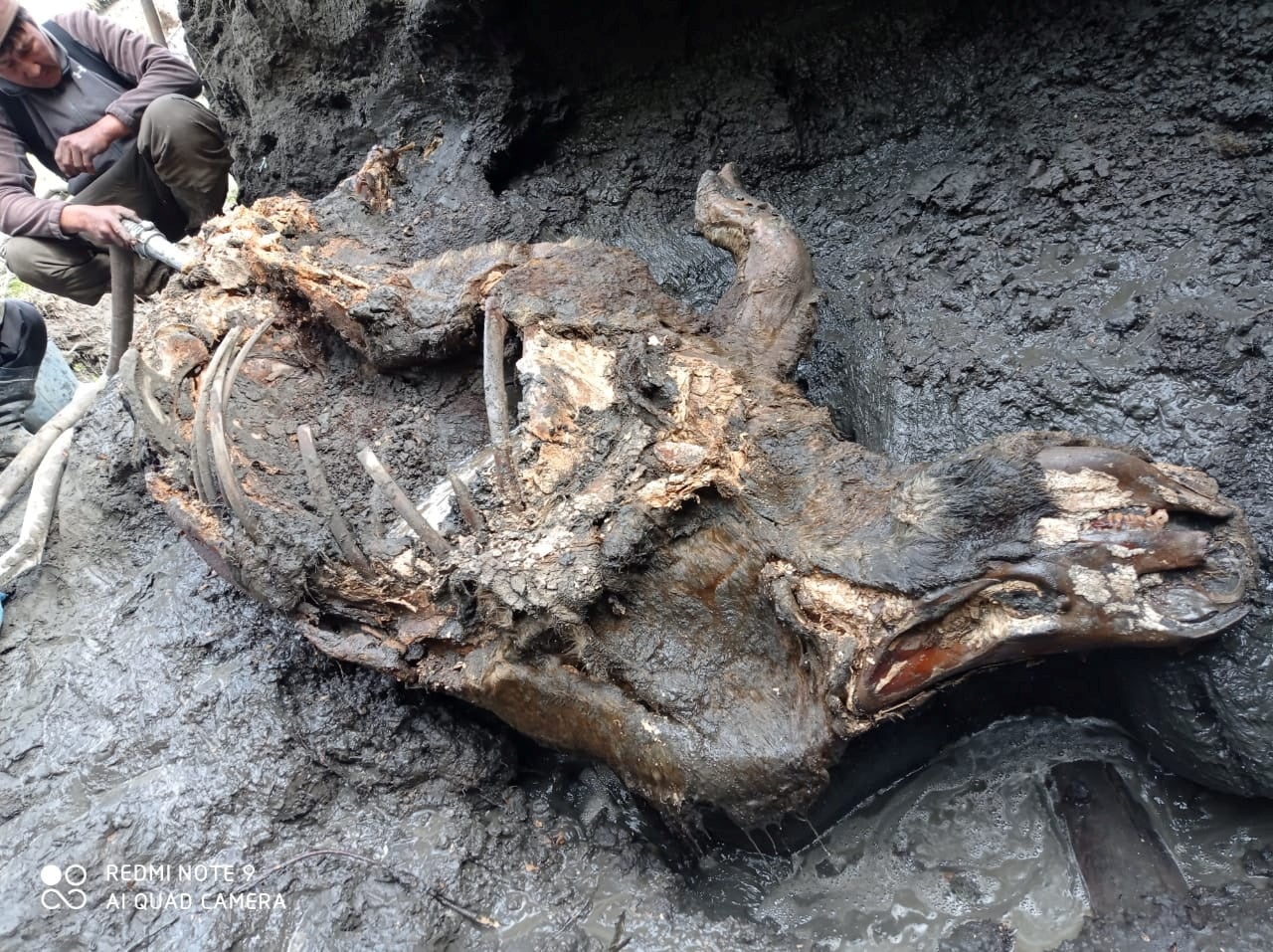Russia’s permafrost is thawing and revealing ancient secrets beneath
Climate change is causing ice to melt, releasing large amounts of pent-up gas

Melting ice within permafrost in the Russian arctic is revealing ancient life that has been buried there for thousands of years.
An investigation by Sky News into the environmental damage caused by the thawing of this region’s vast carbon stores found parts of mammoth tusk as well as fragments of woolly rhinoceros bone.
The animals once roamed the Arctic grasslands before becoming extinct: rhinos around 14,000 to 15,000 years ago and mammoths about 10,500 years ago, at the end of the last ice age.
The bone and tusk fragments were found in Duvanny Yar, near Chersky in the Siberian Arctic – home to international research stations where scientists congregate to study the impact of the retreating ice.
Last year, scientists discovered the well-preserved carcass of a woolly rhino in eastern Siberia thought to have been frozen for tens of thousands of years.
Melting permafrost in the Abyisky region of Yakutia in north-eastern Russia was the cause of the discovery, with much of the rhino's soft tissue still visible, including part of the intestines and genitals, and a small nasal horn, which was remarkable since this often decomposes quickly.
The thawing ice also discloses plant life frozen in time from the Pleistocene epoch – the period that spanned from 2.6 million to 11,700 years ago.
But any revelations about the Russian arctic’s fascinating natural history comes at a huge price. Climate change is causing the permafrost to melt, releasing large amounts of pent-up methane gas into the atmosphere and causing the ice to thaw even more quickly.
The region, which is suffering from warmer summers and shorter winters, is also suffering from increasing numbers of wildfires.
Northeastern Siberia has experienced bigger than normal fires this summer amid record-setting heat, and peat fires are particularly harmful for the planet because of the carbon that the peat has been absorbing for tens of thousands of years, which is released.
Scientists estimate 1.7 billion tonnes of carbon is released annually by permafrost melting between October through to April.
This is almost twice as high as previous estimates and far exceeds the 1 billion tonnes of carbon sucked up during the growing season.
Currently this carbon-rich soil covers 24 per cent of land in the northern hemisphere and holds more carbon than has ever been released by humans.
A study published in March 2020 found that animals including herds of horses, bison and reindeer, can be used to slow the loss of permafrost soils by disrupting the insulative layer of snow which sits on top of the peat in the winter.
When the snow cover is scattered and compressed thanks to the grazing animals' stamping hooves, its insulating effect is dramatically reduced, intensifying the freezing of the permafrost.
Scientists from the Universität Hamburg said around 80 percent of all permafrost soils around the globe could be preserved until the year 2100 using the technique.
Subscribe to Independent Premium to bookmark this article
Want to bookmark your favourite articles and stories to read or reference later? Start your Independent Premium subscription today.

Join our commenting forum
Join thought-provoking conversations, follow other Independent readers and see their replies